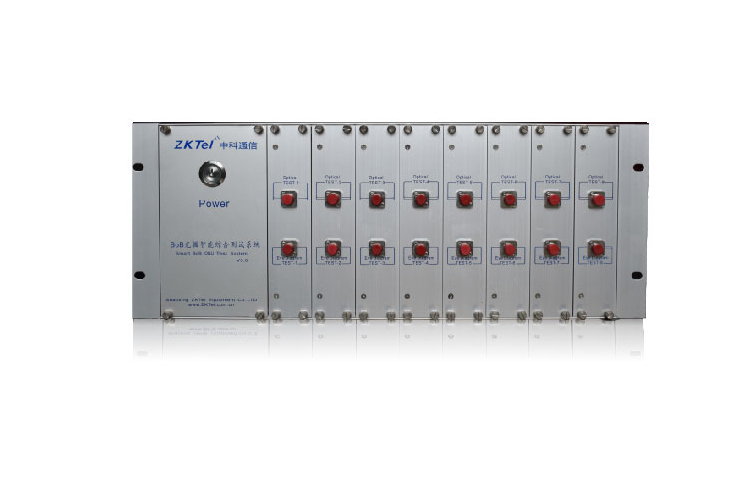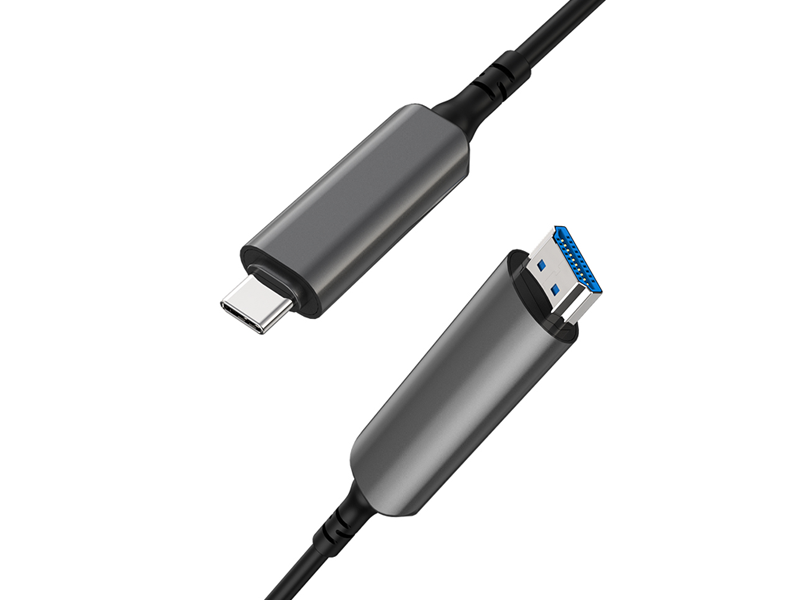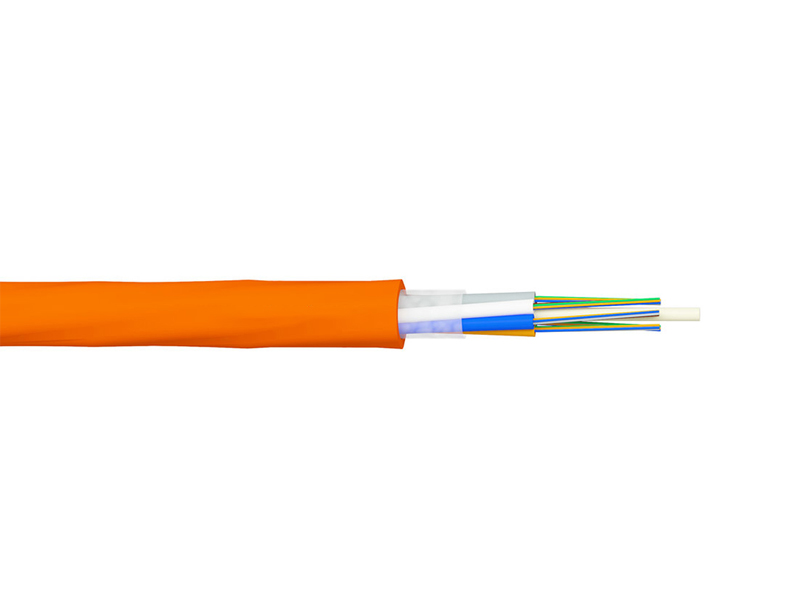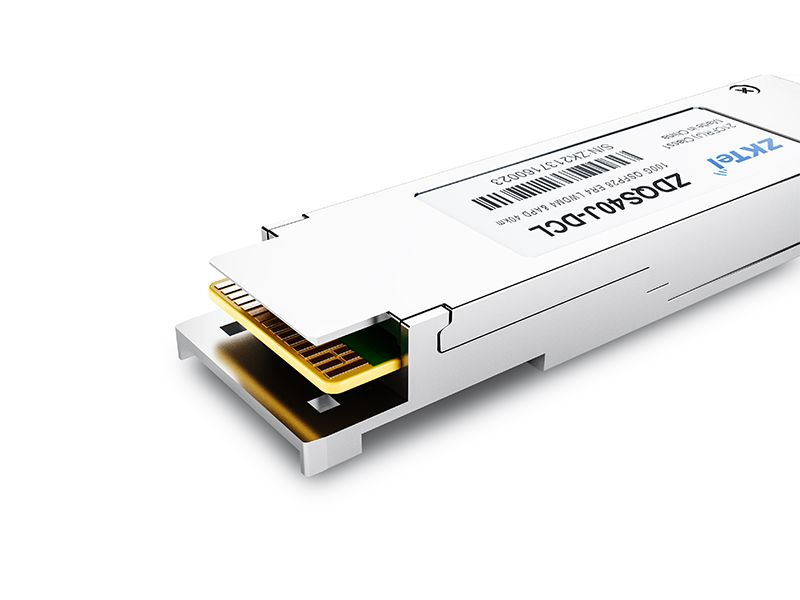In order to provide higher bandwidth in the access network, operators around the world are gradually implementing the "optical-in-copper-out" plan, deploying passive optical networks represented by EPON and GPON. Technically speaking, EPON and GPON both work in the time-division multiplexing mode, which can be collectively referred to as TDM-PON, a mechanism that allocates time slices to each user on a single wavelength, which both limits the bandwidth available to each user and greatly wastes the available bandwidth of the fiber itself. The introduction of WDM technology into PON systems, i.e. WDM-PON, will greatly increase user access bandwidth and meet the ultimate user demand, thus WDM-PON is also considered as a solution for next generation access networks.
Transmitter light source
ONU light source
Various ONU light source technologies in WDM-PON system belong to the category of single wavelength light source.FP-LD and RSOA are the main colorless ONU implementation technologies used in current WDM-PON system.
Among them, FP-LD has been widely used in the current optical communication system, and although the FP-LD used in WDM-PON system is slightly different (such as requiring lower reflectivity on the front surface and higher reflectivity on the rear surface), its cost is still relatively low, and the production volume is relatively large.
For SOA, there are various applications in optical networks and optical modules. In addition to being used as an amplifier, its nonlinear effects can be used to achieve various functions such as modulation, wavelength conversion, regeneration and high-speed (especially above 40Gb/s) optical switching. A slight modification of the structure can result in a reflective device RSOA, which is particularly useful in WDM-PON systems.
In general, although SOA/RSOA devices are versatile, the process is more mature, and can be optimized for different applications, but can be regarded as still in the laboratory application stage, the commercial market is only in its infancy, there is currently no need for a wide range of SOA/RSOA devices to drive. The world's manufacturing SOA / RSOA products are not too many suppliers, including the relatively large scale of the UK's CIP, Scotland's Kamelian, etc., South Korea's ETRI is also developing its own RSOA devices for WDM-PON systems and provided to Corecess. but the current price of RSOA devices for WDM-PON is still relatively expensive, pending the production of scale up to further reduce costs.
OLT Light Source
For OLT, it is inconvenient to use this single-wavelength light source solution because different wavelengths are used to communicate with each ONU. the OLT light source can also use broad-spectrum light source spectrum splitting, but since spectrum splitting introduces large losses (about 18 dB) and can cause a tight power budget, multi-wavelength light sources are mainly used at present. Multi-wavelength light source is on an integrated device that can generate multiple wavelengths of light at the same time, and it is very suitable for use as an OLT light source in WDM-PON systems. At present, the main multi-wavelength light sources are as follows.
Multi-frequency laser (MFL): As shown in Figure, a 1×N array waveguide grating and N optical amplifiers are integrated in the multi-frequency laser, and an optical amplifier is integrated at each input of the array waveguide grating. An optical cavity is formed between the optical amplifier and the output of the array waveguide grating, and if the amplifier provides sufficient gain to overcome the loss in the cavity, a laser output is available, with the output wavelength determined by the filtering characteristics of the array waveguide grating. The wavelength interval of the MFL is determined by the difference of waveguide lengths in the array waveguide grating, which can be precisely controlled, and each wavelength can be adjusted uniformly by controlling the same temperature for easy wavelength monitoring, making it an ideal OLT light source. Direct modulation is also possible in multi-frequency lasers, but the modulation speed is limited due to the long laser cavity. 16-channel interval of 200GHz and 20-channel interval of 400GHz MFLs have been introduced, and the direct modulation rate is 622Mbit/s.

Gain-coupled DFB laser arrays: DFB laser arrays are integrated multi-wavelength light sources in which multiple InGaAsP/InP multi-quantum well waveguide lasers with identical properties are fabricated on the same substrate.DFB laser arrays combine a gain-coupling mechanism and tuning capability on a single laser module, and wavelength tuning is achieved by controlling the temperature. A thin-film resistor is integrated on the device, and controlling its temperature changes the wavelength in such a way that near-continuous tuning is obtained. The advantage of this device is its compact size and high-speed modulation characteristics, but it also has a major problem in that it is difficult to precisely control the wavelength of each laser in the array, since each laser wavelength is determined by an independent filter.
Supercontinuum laser source: A femtosecond laser is used to generate a femtosecond pulse that, after transmission through a nonlinear medium, leads to pulse spreading and linear frequency chirping due to self-phase modulation effects. In the broadened spectrum, the wavelength increases linearly with time, thus different wavelengths occupy different time slots and downlink data are modulated on each channel by TDM. The broadened spectrum can be amplified and tapped to support multiple PONs, which are shared by a large number of users.
Wavelength Division Multiplexer
In WDM-PON, WDM is often called a wavelength router, which demultiplexes downlink signals and assigns them to designated ONUs, while multiplexing uplink signals into a single fiber for transmission to the OLT. its main indicators are insertion loss, crosstalk, channel spacing, polarization dependence, and temperature sensitivity. Various structures of devices are available, such as thin film interference filters, acousto-optic filters, fiber grating, AWG, etc. In the case of a small number of channels, thin film interference filters and fiber grating is a better choice; and for more than 16-way WDM systems, multiplexing/demultiplexing devices are mostly used AWG, mainly because AWG is loss independent of the number of channels. Array waveguide grating developed in recent years has the advantages of small size, easy integration, narrow channel spacing, stable performance, etc., which has promoted the development of WDM-PON.
Although AWG has been widely used in DWDM systems, when applied to PON networks, active temperature control devices cannot be used and will face the problem of wavelength drift due to temperature changes, so thermally insensitive AW (AAWG) is critical for WDM-PON systems. At present, thermally insensitive AWG is technically mature, but the price is slightly expensive compared with ordinary AWG. If it can be mass produced and widely used, the cost of thermally insensitive AWG will be basically the same as that of ordinary AWG.
WDM Receiver
The receiver in the WDM-PON system includes the photodetector and the accompanying circuit for signal recovery (digital optical receiver).
Commonly used photodetectors are PIN photodiodes and avalanche photodiodes, which have different applications depending on the required sensitivity. The digital optical receiver usually consists of a preamplifier, a main amplifier, and a clock data recovery circuit (CDR).
The receiver in WDM-PON consists of a demultiplexer and an array of receivers. In WDM receivers, linear crosstalk at the demultiplexer needs to be considered, and linear crosstalk can cause a rapid increase in power loss. The methods to control crosstalk include power equalization from each ONU, double filtering of the received signal, etc.
Wavelength Monitoring
Since multiple wavelengths are used in WDM-PON, and since AWGs are generally placed in the open air and there is no temperature control, the effect of temperature on AWG passband variations is very important. Generally speaking, the temperature difference of AWG ranges from -40 to 85°C, and the passband shift rate is 0.011nm/°C. Therefore, at such a temperature difference, the wavelength will have a shift of 1.4 nm. Such an offset will be on the same order of magnitude (100~200GHz) as the wavelength spacing of DWDM, which will seriously affect the operation of WDM-PON. Therefore, wavelength detection and tuning work in OLT is required.
Wavelength monitoring uses a differential algorithm to compare the transmit power of a channel with the power through the wavelength router and get the differential signal. if it is smaller than the differential signal of the previous moment, the temperature changes ΔT in the current direction, and vice versa indicates that the channel mismatch increases and the temperature changes ΔT in the opposite direction. the method should be properly selected for the rate and step of temperature adjustment ΔT.
Wavelength monitoring can be achieved by monitoring the downlink channel power and monitoring the uplink channel power. For downlink-only composite PONs with WDM, only the downlink channel power can be monitored, and this method requires an additional loopback fiber, or a monitoring channel and fiber grating. For the uplink using spectrum splitting WDM-PON, wavelength monitoring can be performed by comparing the uplink signal power before and after demultiplexing at the OLT, which requires only additional couplers and no additional channels.

























